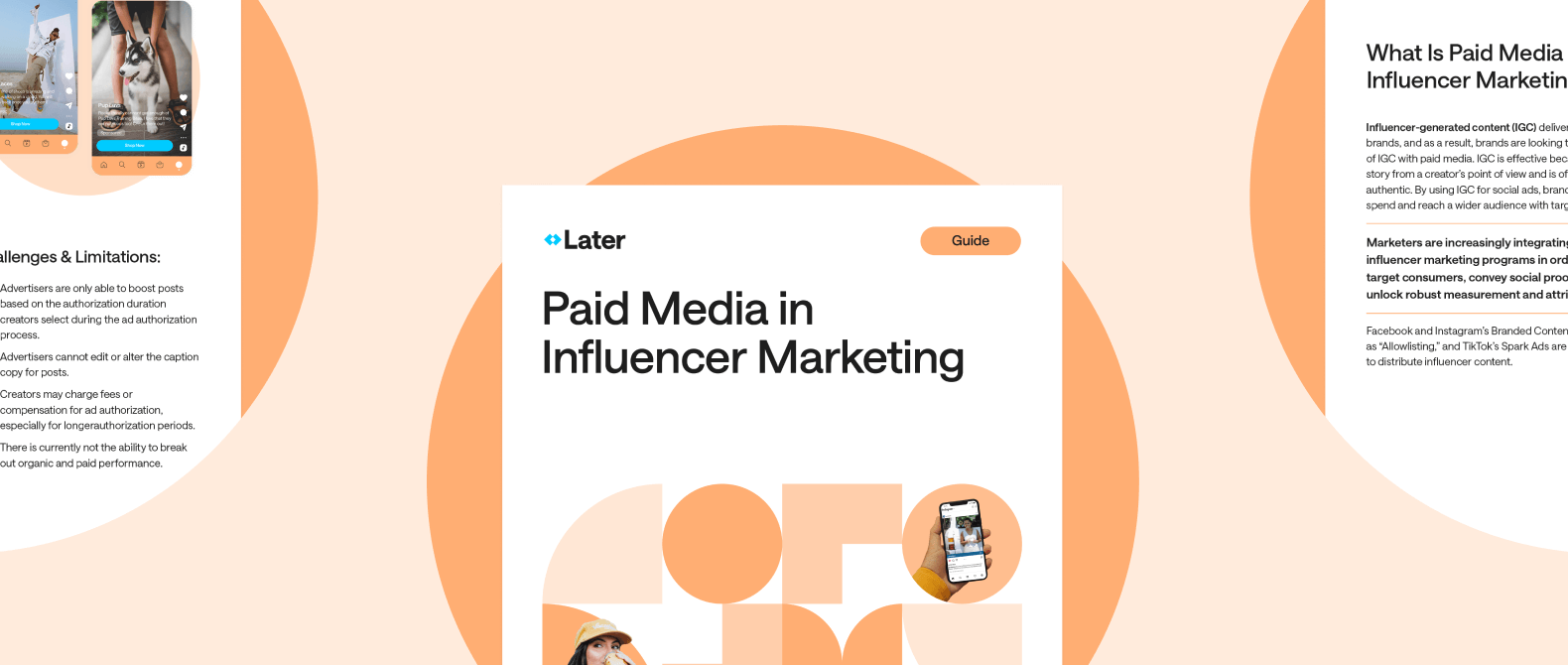Guide
The Ultimate Guide to Paid Media & Influencer Marketing

Enter your details to download!
How to Use Later’s Ultimate Guide to Paid Media
Learn how paid influencer marketing works
Find out when to leverage influencer marketing and paid media in your strategy
Gain insight into paid media best practices
Discover paid media methods such as branded content ads, Spark Ads, allowlisting, and more.
Ready to start incorporating paid media and influencer generated content in your strategy? Download our free paid influencer marketing guide today.
Discover the Benefits of Using a Paid Media Strategy
If you’re an influencer marketing manager or brand looking to reach a wider targeted audience — this download is for you.
Using paid media to amplify your influencer generated content (IGC) helps to skyrocket your reach, which ensures the content goes beyond its organic limitations. It’s a win-win for both you and the influencer.
Created by industry experts, Later’s Guide to Influencer Marketing in Paid Media takes the guesswork out of paid media. We’ll walk you through all of the benefits of why pairing paid media with your influencer campaigns is a no-brainer.
Download it today.
Created by Pros

Later Team
Later's award-winning team has a wealth of experience creating content for brands that want to stay ahead in influencer marketing and social media. Powered by Later EdgeAI, we analyze billions of creator, commerce, and culture signals to deliver insights you can trust and act on today for a better brand tomorrow.
Share
Get Your Free Paid Media in Influencer Marketing Guide
Learn how to leverage paid media for enhanced growth and ROI.
Your Ultimate Guide to Paid Media & Influencer Marketing is on its way to your inbox!
Can't wait? Download it here now.
Grow your revenue with trusted influencers.
